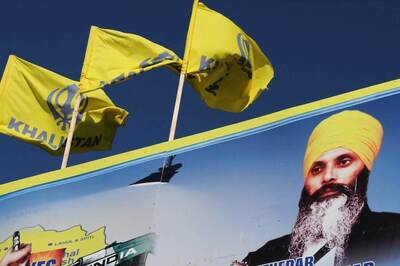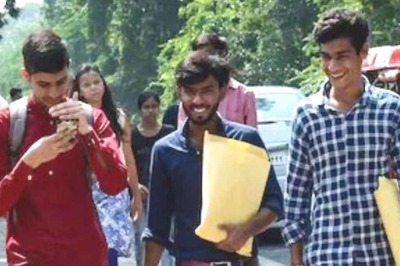
views
Solar physicists have struggled to answer the million-dollar question: why is the temperature of the sun’s surface only 6,000 degrees Celsius, while its outermost layer corona is more than a million degrees hotter? Years of ground observations have fallen short of collecting crucial data that could unlock the mysteries about Earth’s most important star, which is the basis of all life on this planet.
The Aditya-L1 spacecraft contained within the ISRO workhorse, Polar Satellite Launch Vehicle or the PSLV, will lift off from Sriharikota at 11.50 am on September 2. This will take scientists a step closer to answering these questions as India’s first solar observatory in space will be placed in a halo orbit around the first ‘Lagrange point’ (L1) of the sun-earth system, which is 1.5 million km away.
Why was the mission planned?
Indian scientists have studied the sun for years. Solar radiation reaching the earth, however, gets scattered by the pollutants in the atmosphere; so, the images captured are usually blurred. But, a spacecraft placed at the L1 point in space can capture high-resolution images of the sun and its different layers. Though the sun is about 150 million km from the Earth and the L1 point is just 1.5 million km away (merely 1 percent of the total distance), it will allow the spacecraft to view the sun round-the-clock without any eclipse.
In an exclusive interview to News18, Professor Ramesh R of the Indian Institute of Astrophysics (IIA) in Bengaluru said this will be a massive opportunity for Indian solar physicists.
“Years of research have shown that we need to study the sun’s outer layer called corona far more extensively. But it is not possible from ground observatories. First, there is the limitation of dawn to dusk; second, it’s only during a total solar eclipse that we can get an unhindered view of the sun’s outer layer. But that doesn’t last long and happens only a few times,” said Ramesh, who is the principal investigator for the visible emission line coronagraph, or the VELC, which is the primary payload aboard Aditya-L1.
Why do we need to study the sun?
Apart from astronomical research, it is crucial to understand the sun as it often ejects powerful charged particles that have the potential to damage electronic equipment on satellites. These large expulsions filled with magnetic energy are called coronal mass ejections (CME), which can cause malfunctioning of solar panels or scientific equipment on board.
This is significant as there are over 7,000 satellites orbiting the Earth and the number is expected to rise in coming years. Satellites play an integral role – from key functions of telecommunications, navigation, remote sensing, GPS and weather forecasting to monitoring the earth as well as its vast oceans and atmosphere.
Despite years of observations, there are no such forecasting tools available to predict these massive radiation storms that suddenly erupt from the corona into space. They can travel at a speed of about 3,000 km/second and can be ejected in different directions. Sometimes, they can even reach the earth and disturb its geomagnetic field.
“We do not know when and where they can happen. Usually, there can be two to three CMEs per day, but they can even go up to 11 to 12 per day when there are more sun spots. Therefore, it is essential to understand the solar atmosphere and the changes in its magnetic field, so we can devise ways to predict these flares,” said Ramesh.
Several solar missions led by European and US space agencies have not been able to collect enough data about the corona. “It is the most important star for us and we need to understand its effect on us. With Aditya-L1, we hope that we will be able to study even the lowest boundary of corona,” he said.
100 days to reach the final orbit
Once the rocket lifts off from Sriharikota, it will be placed in a low-earth orbit (LEO) around the Earth. Subsequently, its orbit will be made more elliptical and, later, the spacecraft will be propelled towards the L1 point exiting the earth’s gravitational pull. It will take about four months for Aditya-L1 to reach its precise orbit.
“We are hoping that we will be able to generate data by the first few weeks of January. The data will be transmitted by the Indian Deep Space Network (IDSN) operated by ISRO,” the senior scientist said.
Aditya-L1 will carry as many as seven payloads, including the VELC, developed by IIA in close collaboration with ISRO. The other payloads will try to image the sun’s layers – photosphere and chromosphere, solar winds as well as its interplanetary magnetic fields.




















Comments
0 comment